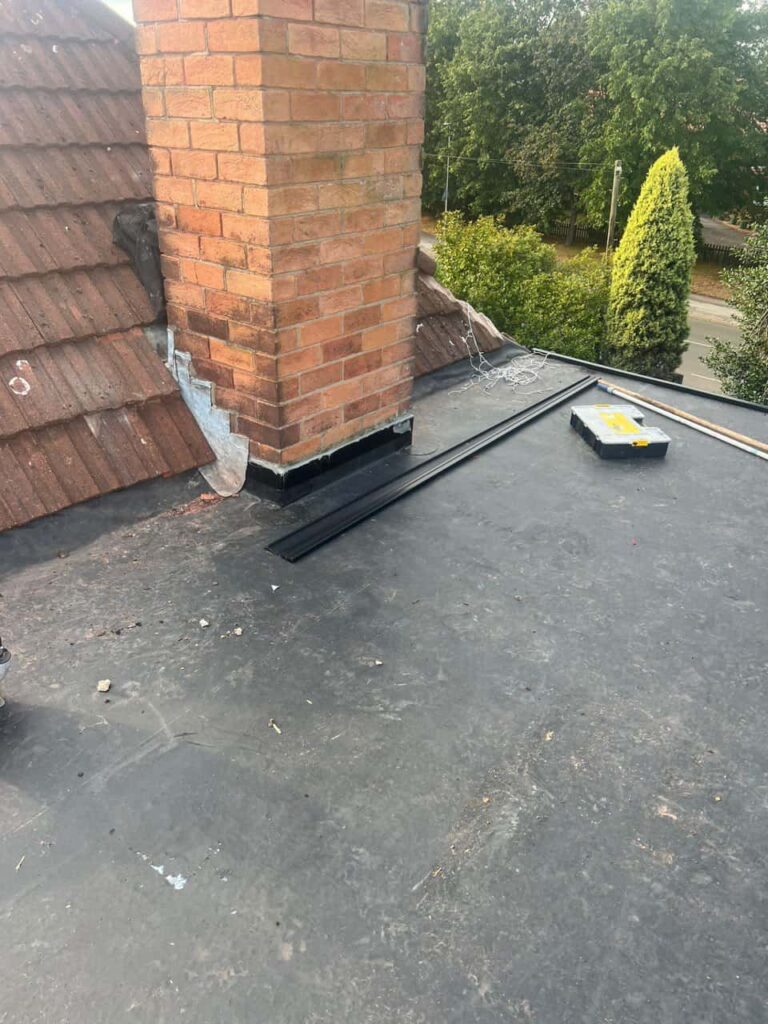Introduction
A roof leak can feel like a homeowner’s worst nightmare — especially when it appears suddenly during a heavy downpour or overnight storm. That sinking feeling when you spot water dripping through the ceiling isn’t just about the mess. It’s the uncertainty of what damage might already be done.
At Cowplain Roofing Repairs, we understand how stressful roofing emergencies can be, especially in unpredictable British weather. That’s why taking immediate, clear-headed action within the first hour is crucial. In this guide, we’ll walk you through exactly what to do to protect your home, mitigate damage, and ensure your next step leads to a lasting repair.
Identify the Leak’s Source (But Don’t Climb the Roof)
Stay Safe and Use Visual Clues
When water is pouring through the ceiling, the first instinct may be to rush outside or up to the loft. But safety first: avoid accessing the roof or unstable areas.
Instead:
- Use buckets, towels, or any container to catch water
- Follow water trails to the most active points of leakage
- Check the loft if it’s safe — look for dripping rafters or soaked insulation
- Listen for consistent dripping or dripping that follows a pattern
You’re not looking to fix the problem yet — just understand where the leak is coming from and how far it’s spreading inside your property.
Limit Interior Damage Immediately
Act Fast to Protect Your Belongings
Water and furnishings don’t mix. In the first hour of a leak, your priority should be stopping damage to flooring, furniture, and personal items.
Steps to take:
- Move furniture, electronics, and rugs away from the affected area
- Place plastic sheets or waterproof tarps over heavy or unmovable furniture
- If your ceiling is bulging, puncture it gently to release trapped water
- Soak up water on the floor with towels to prevent slips and wood swelling
Time is of the essence here. The longer surfaces are exposed to water, the more expensive the restoration process becomes.
Turn Off Electricity in Affected Areas
Prevent Electrical Hazards
Water and electricity are a dangerous combination. If water is dripping near light fittings or sockets, act quickly:
- Switch off electricity at the consumer unit (fuse box) for the affected area
- Avoid touching wet fixtures or appliances
- Never attempt electrical fixes yourself — leave it to the professionals
Safety should always be the top concern. A quick shutdown can prevent shocks, shorts, or even fires.
Photograph the Damage
Document Everything Clearly
Whether you’re contacting a roofing team or simply planning repairs, clear visual records are invaluable. Take photos of:
- The leak source and all visible water damage
- Wet walls, floors, and ceilings
- Any furniture or items affected
- Any debris or fallen materials
This documentation helps your roofer assess the problem more accurately — and if any claims need to be made down the line, you’ll be glad to have proof.
Contain the Leak With Temporary Fixes (If Safe)
Short-Term Solutions Until Help Arrives
If it’s safe and conditions allow, try these quick fixes while waiting for a professional:
- Place a bucket or large container beneath the leak
- Use an old towel or sheet to funnel water into a central collection point
- If the leak is from flashing or a chimney area, and you’re experienced, a tarpaulin may help — but never risk climbing the roof without safety gear
Remember: a temporary patch is just that — temporary. It can help manage the situation, but a lasting fix will require skilled hands.
Contact a Trusted Local Roofing Specialist
Act Quickly, Choose Wisely
This is the point where calling a reliable roofer becomes essential. At Cowplain Roofing Repairs, we’ve responded to countless emergency callouts across Hampshire, and the sooner we’re informed, the better chance we have of preventing long-term structural issues.
Provide as much detail as possible when calling:
- When the leak started
- Where you think the issue is coming from
- What the weather conditions were like
- What steps you’ve already taken
The more we know, the more effectively we can prioritise your emergency and arrive prepared.
What NOT to Do During a Roof Leak
Mistakes to Avoid
In a rush to manage the situation, it’s easy to make costly errors. Avoid:
- Climbing onto a wet roof — it’s extremely dangerous
- Using DIY sealants in bad weather
- Ignoring minor leaks — they grow faster than you’d think
- Using electrical appliances near the leak
Staying calm and taking logical steps is more effective than rushed patch jobs or risky manoeuvres.
Conclusion
The first hour of a roof leak can make all the difference. By acting swiftly — protecting your home, securing your safety, and calling professionals — you limit damage and set yourself up for a faster recovery.
Cowplain Roofing Repairs is always ready to help our Hampshire neighbours get back to dry, secure living. If you’re facing a leak or want a post-storm inspection, don’t wait. Early action is your best defence.
Call us on: 023 9387 2689
Click here to find out more about Cowplain Roofing Repairs
Click here to complete our contact form and see how we can help with your roofing needs.

